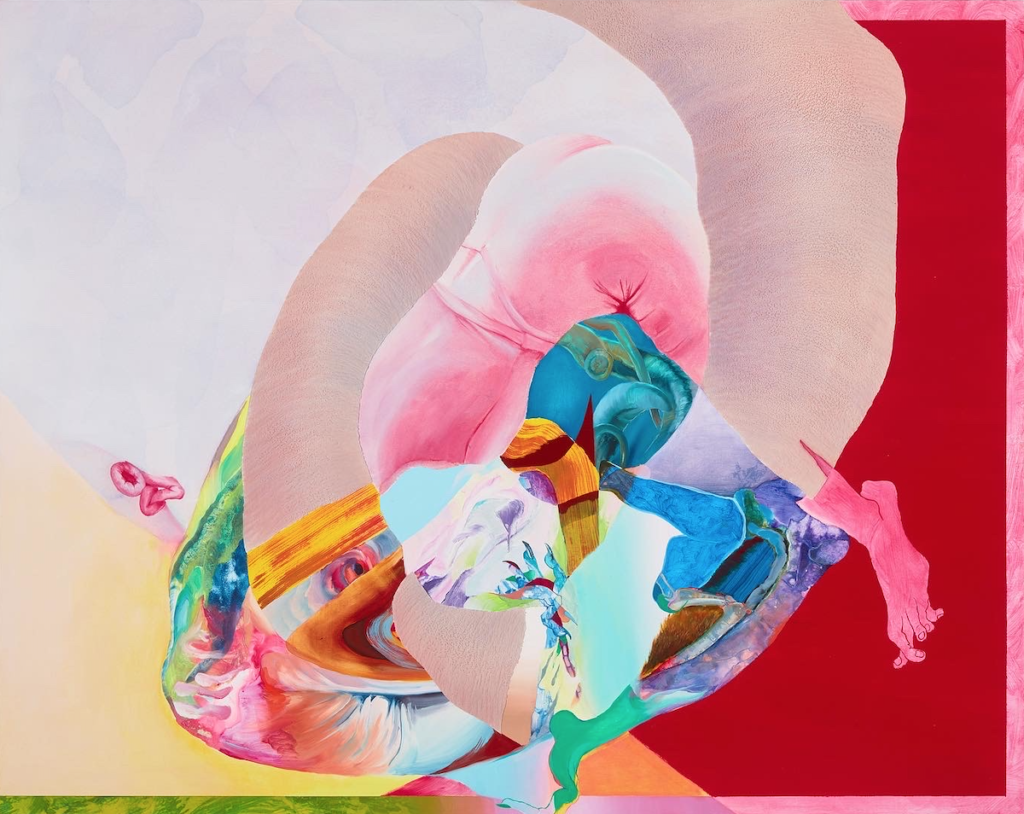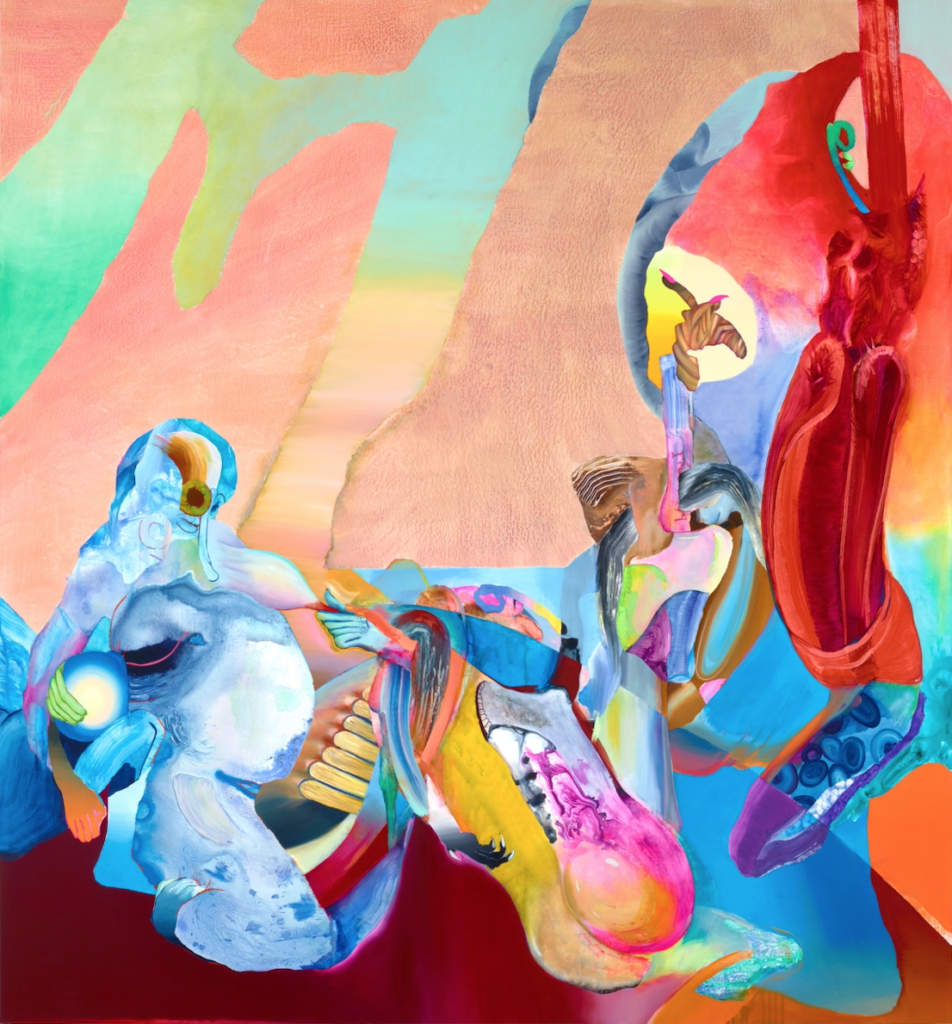March 24, 2021
Artist to Watch
Ilana Savdie

NB: You have been working at the prestigious NXTHVN Residency in New Haven, Connecticut for the past year. What has been your greatest learning throughout this process? Can you tell us a little about the ambition and purpose of the residency?
IS: The residency is in year two, so it’s still growing and evolving. The main ethos that seems to permeate is about creating a space where very early career artists can receive the kind of mentorship that is otherwise hard to access. It was founded by Titus Kaphar, he makes a great effort to unlock a lot of the ‘secrets of the trade.’ There are many things that are withheld or passed down only to an elite few in this world and Titus really wants to create an environment where that process is democratised in a different way. I’ve learned a tremendous amount about what it means to engage with the people that give me the platforms to share my work, such as galleries and collectors while retaining my sense of self in my studio so I can continue to think about how I make my work, about painting, and about my place in the history of art, if I get the privilege of having one.
We learn how to engage with people that actually have power in this industry in a way that someone, early in their career, has not experienced yet. It has also been a discovery process for myself and realizing that actually I do have power, and it turns out, a lot more power than I originally thought — that shift was a big one for me. Artists have a lot of power if we just talk to each other, if we communicate our experiences, I believe this is what helps takes the keys away from toxic people. And in a more personal way, I have learned very much about what it means to trust my own instincts, both in my work and with people.

NB: So NXTHVN really provides that supportive environment that can really prepare artists as they transition from the institution of the university to the art world, and it provides that business experience, expertise, and insight to how the art market and its players interact and how you can best work with them?
IS: Absolutely, there’s definitely an understanding that this is your job, and there is no shame in acknowledging that you want to live off of it. For some reason, people like to shame artists out of financially supporting themselves through their own work, and I don’t subscribe to that. To each their own, but I think at the end of the day we all need to pay for health insurance in this country, at the very least, not to mention that making art is expensive. Everybody has a different way of approaching their work. But money is exchanging hands, going into someone’s pocket, I believe in the artist getting to have a pocket. In order to get there though, you have to know what it is that you’re working with — whether you want to make changes to the industry from within, subscribe to it and perpetuate it, or burn it all to the ground. Whatever it is, this is the [art] market and this is how it works, and NXTHVN is definitely a place that doesn’t shy away from the uncomfortable conversations about what you’re walking into.
NB: Last time I was at your studio, I got a glimpse into your powerful new body of work and we talked about how you tapped into your childhood memories. Do you want to tell us a little about that, and specifically about the character that features throughout?
IS: I grew up in Colombia, as did my mother and most of my family, yet nationality has always been a complicated subject for me. My family is all Jewish and from all over the world, so they ended up in Colombia as a result of many different diasporas. My father is Egyptian and my mother is Venezuelan, but her family is Romanian and Polish, and all were expelled or escaped from their respective countries, so I actually have a very complicated relationship with the idea of heritage. I have a very personal relationship, and a very acute relationship, with what it means to grow up in a place, to leave that place, and to have it exist as memory, the uncanny feelings of having home be both familiar and unfamiliar.
The experience of placelessness is a big aspect of my work, and informs how I approach any sort of ‘truth’ in the paintings. My work doesn’t deal with any particular nationality because I don’t really have one— landscapes and geographies do not really apply to me. With that in mind, I was deeply impacted by the experience of growing up Colombian, and specifically growing up surrounded by the Carnaval de Barranquilla, which happens in my hometown every year. Barranquilla is the city that hosts the second largest carnival in the world so while it’s only three days a year, it leaks into the culture of the entire coast. The ethos of the carnival has had such a strong impact on who I am, who I grew up around, and how I approach things. The idea of resisting and flipping social norms, of using the exaggeration of the body as a way to mock, to resist, and to protest oppressive boundaries; the grotesque body and idea of ‘the uncanny’ as an access point. All these things that are true to the carnival feel true to how I approach my work. These are themes and acts that I’ve located myself, my identity and my experience though, and they’ve permeated my work, through color, in a major way. Lately I’ve been working with the features of marimonda, a prominent figure of the Colombian carnival, which always fascinated me as a child. I use the features of the marimonda, which are big eyes, a floppy nose, big lips, which are said to be the combination of a number of different animals but it has this really phallic appearance; it looks like human genitalia, it is really strange. I bring in these features in part to locate figures in the work. The origin of the costume is said to have been a way to mock the oppressive elite of the time. Of course, as with any kind of folkloric history, it is passed down through word of mouth, so a lot of things aren’t historically concrete, but that’s the way it’s said to have been. In recent years it was brought into the carnival, so I am also really interested in its history, and it’s evolution.
NB: Tell us a little about your exhibition at Deli Gallery where you just had a sell out show, congratulations! Can you speak to that body of work, and how everything that you’ve just talked about translated into the show?
IS: My work deals with the body in all its different states, that includes all the things that live on the body. It poses the question of: who gets to have a body? What constitutes a body, and where does it start and end? If we are our bodies, we are also all the things that live on us — we are our viruses, our parasites, we are everything that threatens and consumes us; we are in a constant state of flux. The original idea was for the show to be a series of small paintings, all around 16 x 20, focusing on the microscopic bodies as the real estate in the paintings. As I started to develop this work, I realized that I didn’t feel ready for a show that only focused on that because I’m still at a state where it’s about the simultaneity of all bodies and organisms and identities coexisting and propelling power as they locate home, history and heritage. The show very quickly became about focusing on that process. I’m thinking of the way I make these paintings as creating paths for these bodies, and then derailing those paths. I’ve been thinking about this show as that process of derailment, and really showing different elements and different moments of that process throughout the space.
NB: The deconstruction of the body has been a theme in your work for a long time, since I first met you, including plastic surgery techniques and how they could be incorporated abstractly into painting. The way in which you approach the body is so fresh, and then your use of the color palette on top of that is gorgeous. I have the pleasure of living with two of Ilana’s works.
IS: Yes, that’s true you have two different stages in the evolution of this work! I think this concept is definitely something I am going to work with for a very long time. I don’t know how to exist in the world without being fully aware of my own body at all times. I think it comes from always feeling that I’ve been given a box that was too small, a chair that was too small, or a boundary that was too small. Being told — in the context of my body and my identity — to take up as little space as possible; I am never not aware of how I spill out. I’m going to call that a huge privilege of having a big body: I get to know my environment more, I get to know every space I’m in, and I get to make these paintings from that [experience]. I am always going to break it down. I am always going to break down the body because it doesn’t make any sense to me.
All the figures in my work are multiple figures, and they’re also all the same figure. That is what I mean by ‘untruth’ — the process of one ‘truth’ ‘untruthing’ another, but also never really allowing for that to happen. There is always going to be more than one body, but it’s just a matter of what constitutes a body. But then, at the same time, I consider them all the same body and also all real estate for more bodies. There is a constant in that they all have the same features but aside from that I don’t isolate into a gesture. I try to use as many different ways of thinking about and applying paint as possible, so I don’t separate figures from environments. I don’t separate figures from each other through gestures, so it really becomes about how I like to have [the work] constantly delivering different things the more time you spend on it. As soon as you decide that you’ve found something, it’s derailed, and you’re somewhere else. I want that to be a constant spinning wheel or something.

NB: What’s next for you? You just mentioned that this is an area you’re going to continue to work in for a while, are you planning to expand this series? What does life after NXTHVN look like?
IS: Yes, I am actually working toward another solo show this year. This one is going to be at Kohn Gallery in LA. I am going to say it’s a continuation of this series, for sure, because these are works that I have been doing simultaneously. They are going to be larger paintings. In larger spaces, I am able to expand on the figure much more. I like to think of the body as real estate for more things, more bodies, more gestures and more textures. More space for these bodies, and more bodies for this real estate. So I am excited about that, that is sort of the focus at the moment. So, post-NXTHVN it’s going to be about continuing this work!


